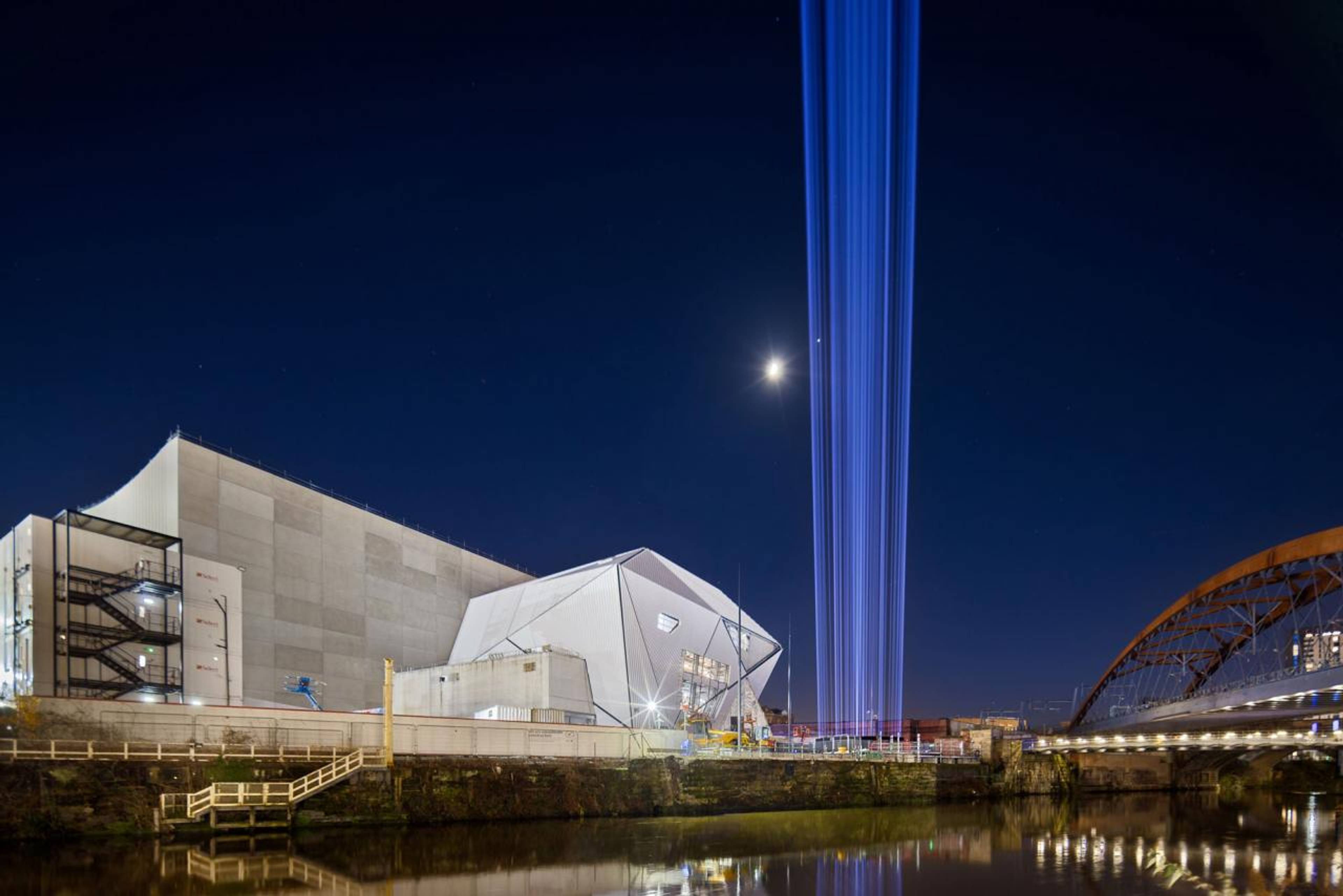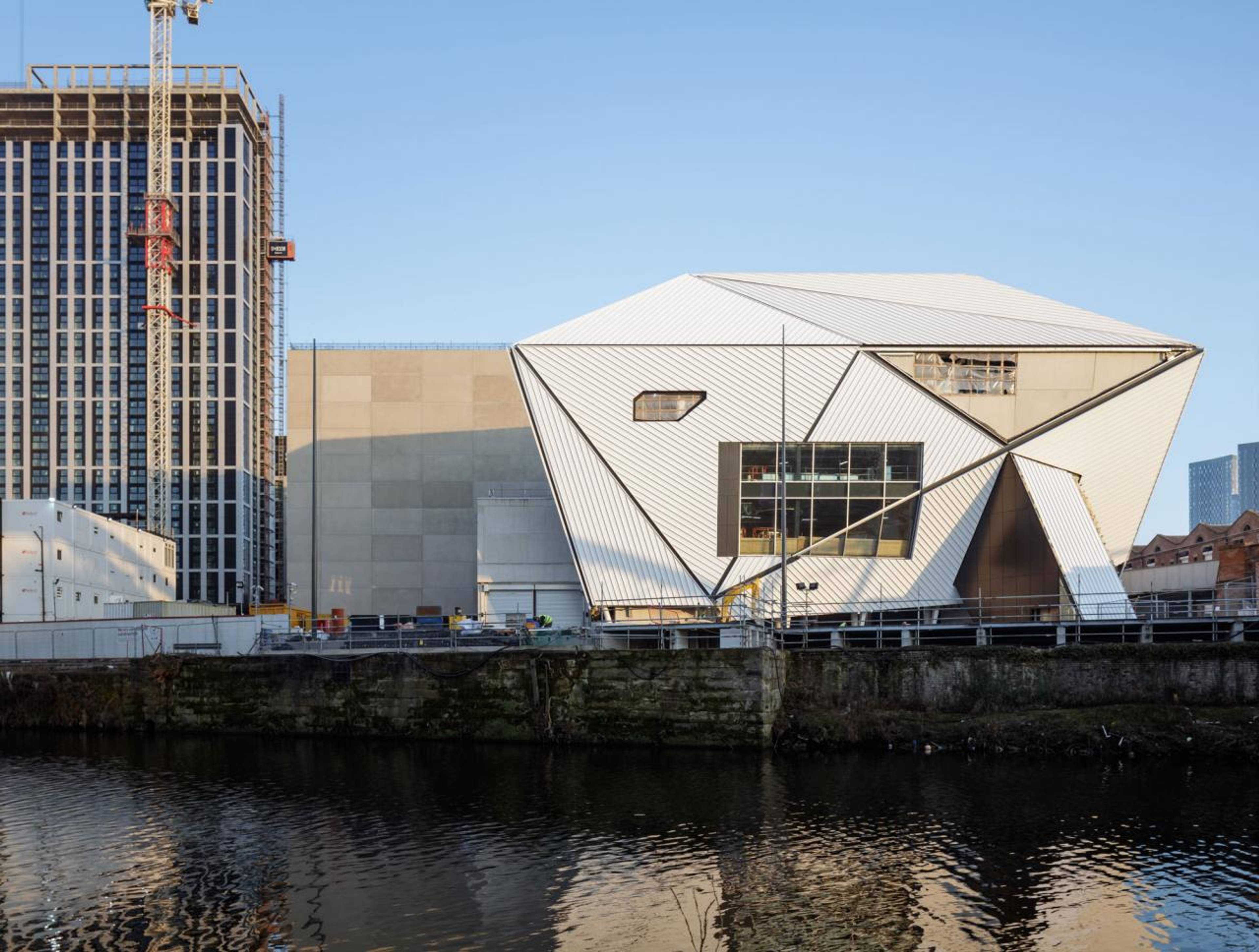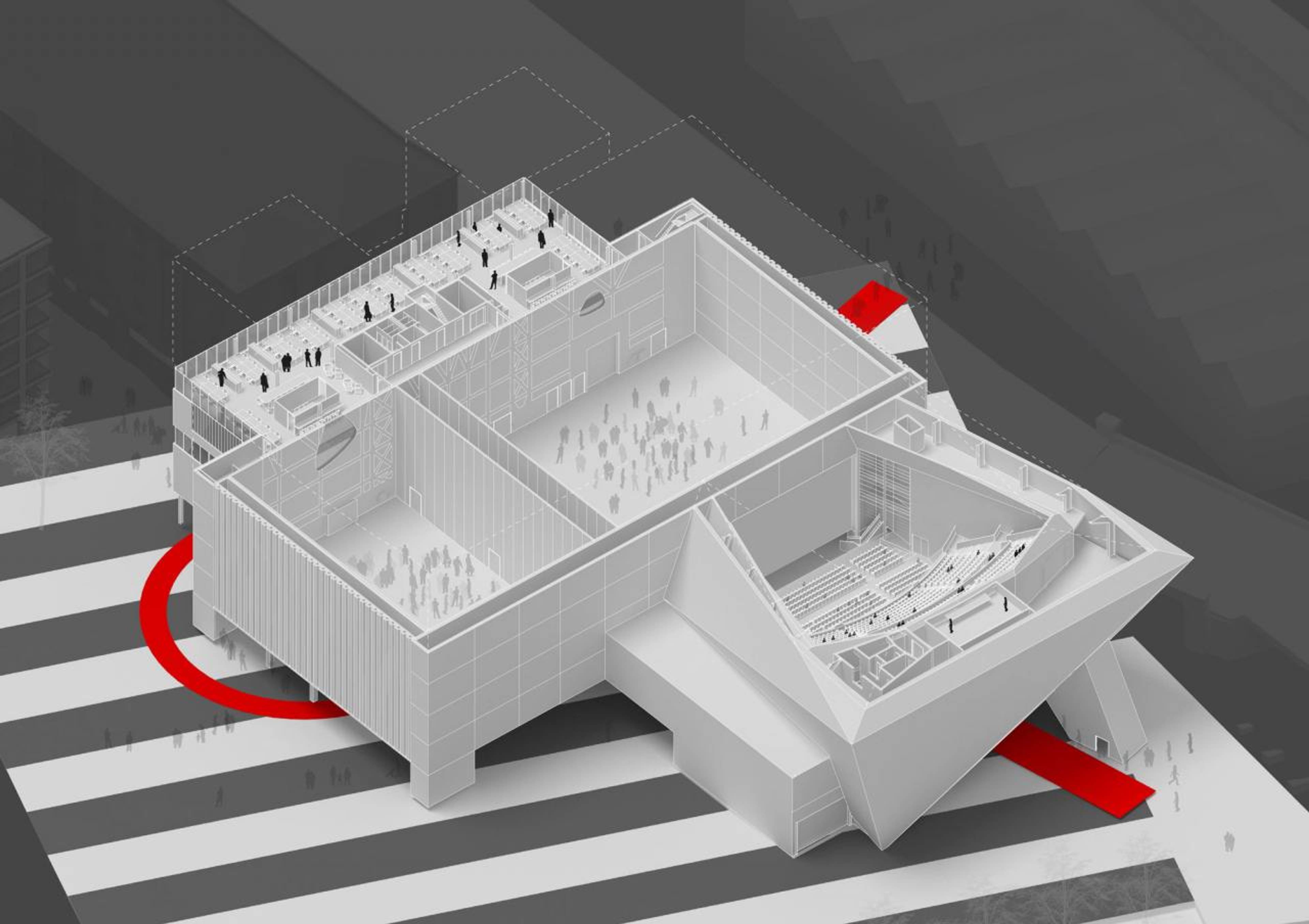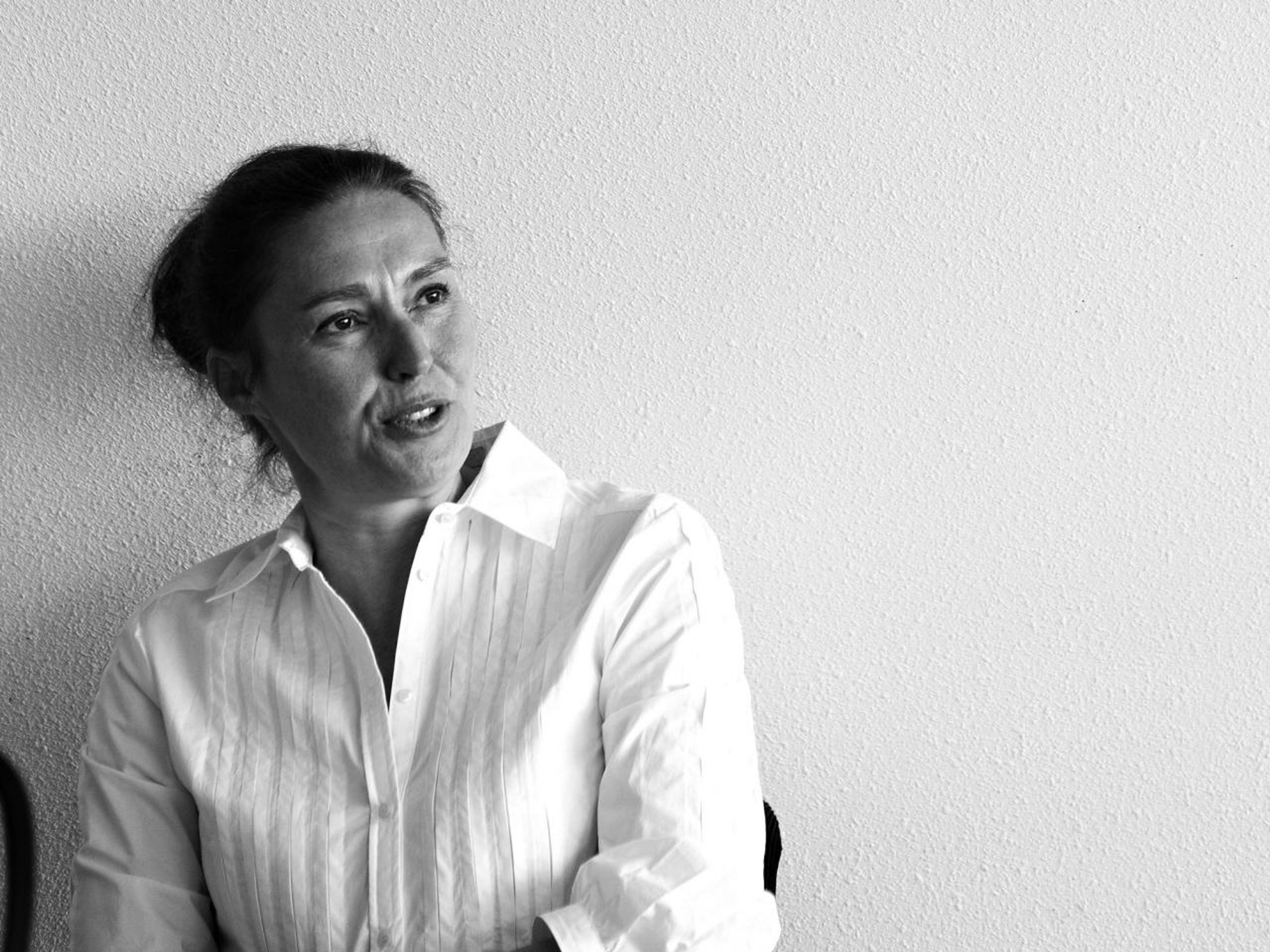Factory International is a new performing arts complex in central Manchester, consisting of a sprawling, industrial warehouse space and a performance hall that will seat upward of 1600 people. Marking the building’s soft opening for this summer’s Manchester International Festival, its lead architect, OMA partner Ellen van Loon, reflects on being the firm’s first woman employee, the downsides of digital rendering, and always trying to design for the next generation.
Alana Pockros: I’m really interested in women in the art and architecture worlds and the ways they navigate those spaces. How it was when you first started at Office for Metropolitan Architecture (OMA) and became the only woman to join the boys club?
Ellen van Loon: In my case, it was a little bit more extreme. Before I came to OMA, I worked in Berlin, and at a certain point, I got pregnant – and then I had this great emotional desire to go home. Nothing rational, just an emotional decision. So I came back to Holland, and my daughter was born. And then I thought I could no longer work in this kind of office where the light is always on, so I need to somehow work in an office where there are more regular working hours. I started applying at some offices in Holland, but the interviews were so disappointing – I was a bit like, if this is going to be my life, maybe I don’t want to work anymore. But then at a certain point, OMA called me. I had an interview that took all day. Rem [Koolhaas] presented a project to me in LA at Universal Studios, and that was such an exciting project that I thought, OK I’m just going to try it. I had no idea at the time that I was the only mother in the office. At the time it consisted mostly of young people; nobody had children, but I thought that if I was going to continue working, I should at least do something interesting. So I decided to test it out, and now I’ve been here for twenty-five years.
AP: I would love to hear about your newest project, Factory International. I’m curious how you, as an architect, thought about form fitting function? In other words, what sort of design considerations did you make, knowing that this space would have to foster the right environment for different kinds of artworks over time?
EvL: The second project I got when I started working at OMA was the Casa da Musica building in Portugal. Even since then, we’ve been dreaming and developing further concepts for performance buildings. Performance buildings for us are not just for musical performances, but really a mix of disciplines across different types of art. In the meantime, I had worked on other theaters. When you do something you see as wrong, you always want to improve it in the next one. What’s really important for performance buildings is that they are really used for everything. We were always interested in making a building that could be open day and night and was seriously accessible. We built this broadcasting studio in Beijing, for which we had to be cognizant of where the public would sit and where cameras would go because it was used for recording television programs. Out of that concept, we came up with this new concept.
Every wall in a performance space is always in the way, so we tried to make a performance building that could be extended at a large scale, where seating areas can be modified at any point. We wanted to design it such that any person or group who is creating artwork for the space, a play or an opera or whatever it might be, can come up with new ideas about how to best use the space. Manchester Festival creates new performance pieces, and they are often interested in large-scale productions. When you think at that level, you have to think about completely different spaces with lots of flexibility. The performer can go anywhere, the public can sit anywhere, so any configuration needs to be possible.
Factory International, Manchester, 2022. © Pawel Paniczko
AP: I imagine it's probably an exciting feeling when a project like this is done, and you go see a performance there for the very first time.
EvL: Yeah, that is always a very emotional moment! We normally all have tears in our eyes when that happens. Of course, as an architect, you work a minimum of five years, sometimes eight years on a project. In that time, you have to constantly imagine how, you know, certain performances could take place in the building. When I design, I have a whole world imagined in my head. But it’s all imagination.
I remember the first concert at the Casa da Musica: We were sitting there with all the people who worked on the project. Many people had tears in their eyes. It was quite cute, you know? It shows how much passion everybody who has worked on the project has. Every person – no matter if you were working on the structure, the lighting, or even the very technical things – had this kind of fantasy, and that is quite special.
AP: I read in The New York Times that to prepare for the Factory International project, you went to some raves with your daughters. Please tell me about that.
EvL: I did. You know why? Because this was really a building for all types of performances, including street performances and performances made for a young generation. There was a time when I was a bit worried that I was already too old for this, so I decided to go out with my daughters to different kinds of shows.
I went to performances in Amsterdam where I was the oldest person in the room. Other than me, I think the oldest person was about twenty-three years old. I wanted to make sure I could still connect to that generation and also design for it; to make sure there was not a kind of disconnect, because that was sort of my worry.
At the same time, I have to say that Factory Records was founded [in 1978] when I was around eighteen. I grew up with Joy Division and all these bands that were promoted by Factory Records, which at the time were quite provoking. I remember my parents were like, “What kind of music is this?” So now I listen to my daughters and what kind of music they listen to. In my time, it was much more controversial; some of the music I listened to was considered like anarchy. There was quite a big clash between the young generation and that of our parents. That’s less true at the moment. There’s less of a barrier, it’s more fluid. But still, [when I designed this building], I wanted to make sure I wasn’t forgetting this younger generation, because when you design a building, it really is for the next generation.
Every line an architect draws, they draw it for every consciousness. They think, is this a beautiful line? Is it a good line? Or does it just need to move three centimeters?
AP: In one chapter of his book, Architecture, Verb, OMA partner Rainer De Graaf discusses the way in which “beauty,” or “the ‘B’ word,” moved in and out of British city-planning documents over the course of many years. At one point, he quotes the architecture educator Alan Powers, who writes:
In the same way that many people believe it is better to restrict religion to personal belief and action, rather than making it a public principle, so the idea of beauty retreated long ago to become a matter of personal preference and experience – not necessarily killed by consciousness, but better left understated. Politicians, planners, and even architects are shy about invoking it.
Does this still feel true to you, for public or private buildings?
EvL: It’s interesting you bring this up. I work with people all over the world, but mostly in Europe. I discovered when I started working in Southern Europe that the word “beauty” was actually used quite a lot. But when we studied at university, the word was never used in our education, almost as if that word was frivolous. It didn’t cover the real meaning of architecture. We were really educated with the sense that you had to argue architecture, but you couldn’t use the word beautiful.
I was educated like that, and then I started working, first in Northern Europe, and later on more in the south. In the south, the way people talked about architecture was really refreshing. It’s really nice when someone says, “Oh, that’s beautiful.” I like that. But in the north, we never use that word with clients. It’s very strange. The client never uses it either. So the word is somehow left to the press, which is a very strange phenomenon.
Now that I’m getting older, I’m less hesitant to use that word. But it really is an issue in Northern Europe. I don’t know what it is. It’s a cultural thing, which, in my opinion, is not correct. If you would buy a nice dress, I would say “God, that’s a beautiful dress!” and that dress is designed as much as I design a building.
The Factory. © OMA
AP: But when you’re deep in the details of a project, is it easy to forget about that part?
EvL: No, we can never forget about that part. It’s always in our heads. It needs to be beautiful. And beautiful, of course, means different things for different people. But we always think in the sense of beautiful, appealing, nice.
But of course, in our profession, especially when you're trying to construct a building like this one in Manchester, you face a lot of technical issues. You have to rethink your organizational problems, and sometimes, since we often spend more time on that part of the project than on thinking in terms of beauty, we sometimes forget the words. But then the building opens, you zoom out a bit, you look back at it, and the words come back to you. Every line an architect draws, they draw it for every consciousness. They think, is this a beautiful line? Is it a good line? Or does it just need to move three centimeters?
What is never in the renderings is the behavior of Actual people.
AP: Does anything surprise you about Factory International that you hadn’t thought about before its inception?
EvL: It’s a long process before you get to the end result. Of course, there are moments when you see what you drew on paper, you see only a demo of reality. When it goes up, some things are better [than you imagined]. Some things are different. Some things you should have done differently. It depends on how good you are as an architect at trying to visualize the reality and the space. It’s always an exciting moment when you see it translated into real space with real materials. You always hope it ends up better than you thought it would.
AP: Nowadays, digital renderings of buildings are so good that you can really see what something will look like before it’s built. How did things feel before this technology existed, when you were mocking up buildings solely on paper? And how does it feel different now?
EvL: We were educated before the age of computers, so we were trained to imagine spaces out of 2D materials. And I think we were also quite good at that. (The younger architects are less good at that because they are so used to 3D.) I think the only thing that I sometimes really regret about the current time is that renderings have become so real. This moment of excitement [we had] when this thing was finished is a bit gone, because people already know how [a building] is going to look. For this particular project in Manchester, I had quite a lot of discussions about this. I refused to do real renderings because I think this building is about the imagination.
So the images we did make are more of a collage of ideas than a real-life rendering… and I want to keep it that way until we open. I don’t want to lose that moment.
AP: It’s like taking a picture on a film camera and getting it developed, versus taking a digital photograph.
EvL: Exactly.
And a rendering is very flat, you know what I mean? In reality, you always see much more because you turn your head, you turn your eyes; you have a much bigger range of view. What is never in the renderings is the behavior of the people – or, in this case, the performance, which at the end of the day, really finalizes the building.
Portrait of Ellen van Loon. © OMA / Frans Strous
Manchester International Festival 2023
Factory International, Manchester
29 Jun – 16 July 2023
___





